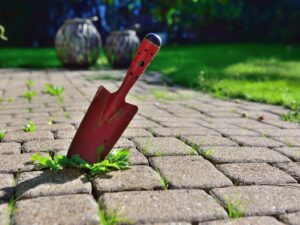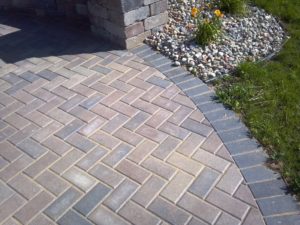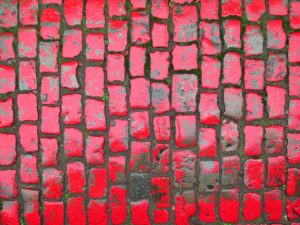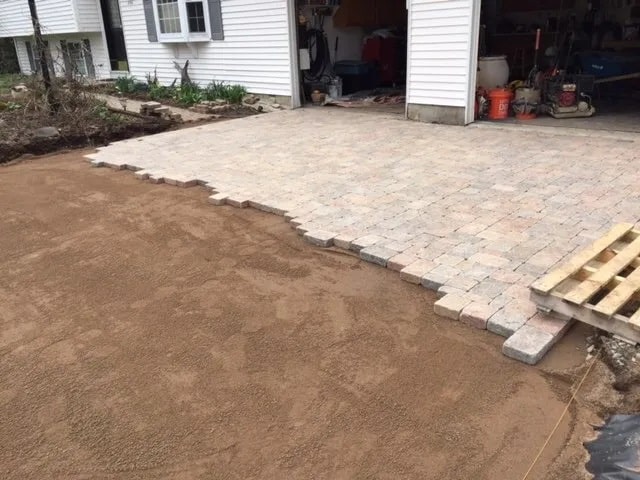
Anyone who has ever worked with pavers know how complicated the installation process can be. As good as pavers are, a bad installation can destroy all their potential. Usually, pavers are installed directly on sand, in what we call a dry installation. But what about the use of thin pavers over concrete?
In the modern hardscape industry, nothing can beat pavers. They are extremely versatile and resistant, and that allows them to be used in many different and creative ways. One of these ways is to use a thin variation of it over a layer of concrete.
This is an alternative, as we already mentioned, to a dry installation. And it is an important alternative at that, as it can save some time and money and be applied in more limited scenarios.
The goal of this article is to explain why this alternative exists, the advantages and disadvantages of it, and how to install pavers using this technique. So let’s get straight to it.
Thin Pavers Over Concrete: Why is it an Option?
Anyone who has ever seen a beautiful paver installation can tell that no other option can hold a candle to it. If compared to other popular options, like asphalt and poured concrete, pavers prove to be much better in all fronts.
They are aesthetically superior, can last a lifetime if properly installed and maintained, and are much more resistant. In the long run, pavers end up paying for themselves. They have tremendous cost-benefit value.
The 1″ thin variation of pavers comes as an alternative to an existing installation of poured concrete. These pavers can be installed on top of it and provide a remodeling of an old patio.
That might be necessary when removing the old concrete installation is not an option, but you still want the visual appeal that only pavers can provide.
Advantages and Disadvantages
Not having to spend time and money to remove an old concrete installation can be a huge help. Thin pavers can be easily installed over it. Not only do they save on that aspect, but they are also cheaper than your regular paver would be.
Installation is easy and really quick. You can do it in one day if you organize for it. You don’t need to dig anything or prepare too much for it.
Pavers are highly resistant – so, unlike poured concrete, there won’t be any cracks or chipped parts. Even if they do get damaged, getting replacements is not a problem. Maintenance is simple, requiring only regular sealing once a year.
Not all of it is sunshine and rainbows, though. Thins pavers also come with some disadvantages that would be disingenuous for us to ignore.
They cannot withstand heavy loads, so they are not recommended for driveways, for example. The overall powerful structure of a paver installation would be lost, and that can only be achieved through a dry installation.
Also, since you’ll have to cover a pre-existing area, you’ll probably have to do some paver-cutting, and that comes with its own set of problems. You can refer to this article for more help on that matter.
How to Install Thin Pavers Over Concrete
Even though we highly recommend professional services, we’ll teach you how to do a decent installation for yourself. Keep in mind that dealing with pavers requires patience and meticulous handwork, so always consider contracting an expert team for this kind of job.
You’ll start by pouring water into your pre-existing concrete patio using a garden hose. As you do it, pay attention to how the water will behave, checking for the slope and formation of puddles.
After that, it is time to start drilling the concrete. You can use a 1″ drill bit and maintain a distance of 18” between each hole, in all directions.
If you identified the formation of puddles in specific areas, you can drill more holes in that area. These holes should reach all the way through the ground. Once all the holes are done, you’re going to fill them with very small rocks, like pea gravel.
Now you’re going to install your border pavers. For that, you can choose if you’re going to use mortar or a strong construction adhesive – it is completely up to you.
The thing is, the height of these border pavers will have to be 2″ tall to stay at the same height as the installation, so you might have to stack two rows of pavers on top of each other to achieve that height.
Now, what you’re going to do is place the mortar or adhesive around the edges of your installation to glue the pavers in place. These pavers will serve as edge restraints for your entire installation.
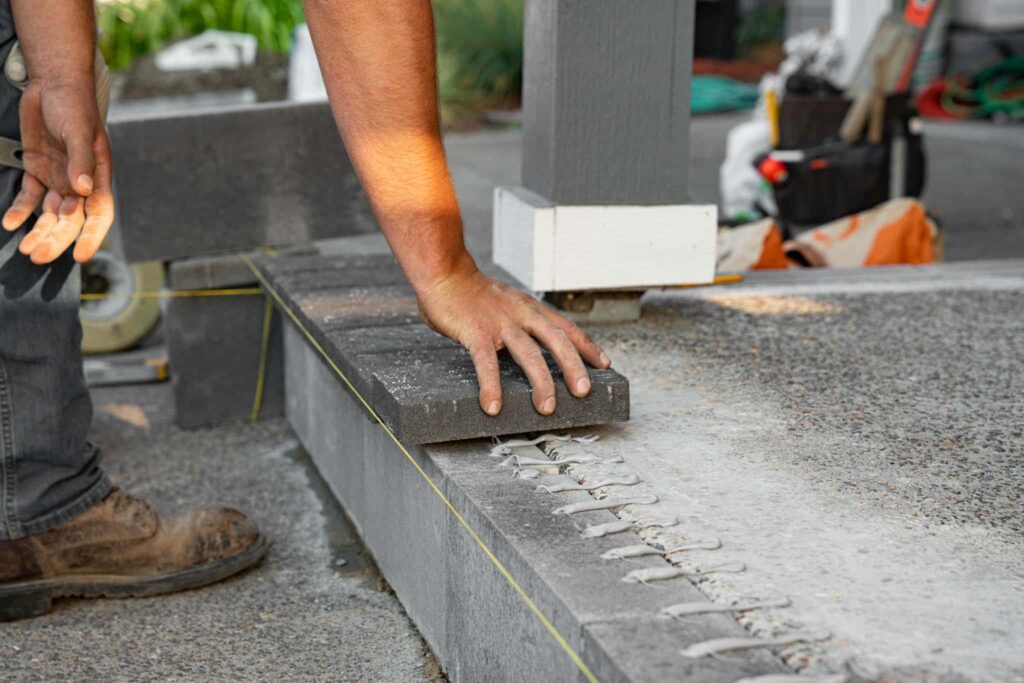
The next step is to cover the inside area with landscape fabric. This is to prevent the sand from falling into the holes, like you’ll see in a bit,
With the landscape fabric in place, you’re going to spread a 1″ layer of sand across the entire installation, screeding it carefully with the help of a 2×4 to level everything up. On top of this layer of sand, you place your 1″ pavers. Place them one by one, carefully, starting from the borders. Simply drop them in place from a small height and never move them around once they are in place.
Following that, it is time to sand the installation and, after a few days, seal your pavers.
To sand the installation, you’re going to need polymeric sand. Simply pour the sand across the entire installation and carefully sweep it around, focusing on filling up the joint between the pavers.
Once the joints are filled, sweep the excess sand away and slightly mist the installation with the help of a garden hose.
Now for an important piece of information that, surprisingly, you don’t easily find out there. The polymeric sand can leave something called efflorescence on your installation. This is nothing to worry about – it is a normal and expected reaction.
The thing is, you should wait between 60 and 90 days before sealing the pavers – otherwise, you run the risk of keeping the efflorescence tapped and staining them from the inside out.
After this waiting period, you can give your pavers a good wash and seal them.
Are Thin Pavers Over Concrete the Right Choice For Me?
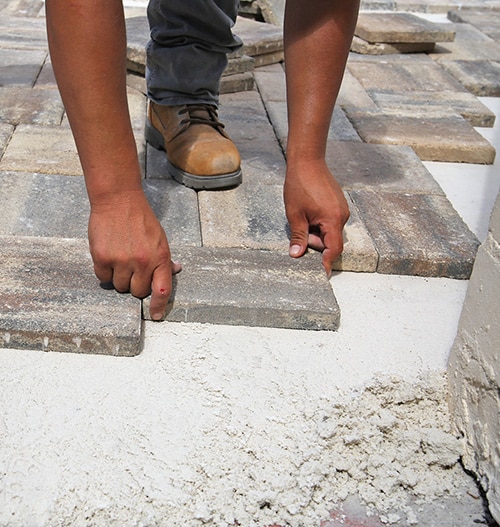
The only person who can give you an answer you can trust 100% is a qualified hardscape professional who has seen your installation.
Only a professional can ascertain the quality of your pre-existing concrete installation to tell you if it can hold a paver renovation or not.
We here at SS Pavers have worked in countless different installations over our 12 years of activity – each one with its different particularities and challenges. Therefore, we know the importance of working close to professionals, and that’s what we always recommend.
Find a contractor in your area to help you and, if you happen to be around our area of activity (the Sarasota and Manatee counties, in Florida), why not give us a call to help you?
You can contact us any time for a free estimate on our services. Call us right now at 941-773-3098 or email us at sales@sspavers.com. We would be happy to hear from you!


